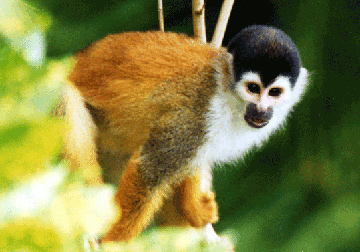Public decides worth of endangered species based on looks first and science last
Cuteness determines whether the public will support saving species from extinction
Jeremy Hance, mongabay.com
July 7, 2008
|
|
How much would you pay to prevent the extinction of the humpback whale? The giant panda? Or how about the red-cockaded woodpecker, the striped shiner, or the water vole? With finite funds and increasing threats to species, should such decision be made on popularity, perceived utility, or ecology?
Over the years, numerous studies have surveyed the public to discover just how much they are willing to pay to conserve particular species. Combining 60 such studies in a meta-analysis, Dr. Berta Martin has found that the public places the most importance on species’ perceived attractiveness. Second to this is the species’ utility for human society (namely for hunting or tourism). These are followed lastly by scientific reasoning, for example the level of threat to the species, the species, role in ecosystem, and other factors. However, the comprehensive look at society’s willingness to pay for conservation also showed that the more informed the public is, the more important scientific–rather than anthropomorphic–considerations become.
Martin says the size of a species’ eyes proved to be the most important measure of attractiveness to humans and therefore the best predictor of whether the public would pay for conservation.

A neotenic species: the squirrel monkey |
“The economic value for biodiversity conservation is mostly explained by the eye size of species, which is an indicator of neoteny. Humans tend to conserve those animals with apparently neotenic features, such as relatively large head and large eyes.” Martin explained.
Neoteny means the persistence of juvenile features in an adult animal, in this case it translates into what the public usually deems as ‘cute’. Martin plans to look at this connection in relation to conservation focus in a future study.
Animals that brought economic gain or provided sport generally scored higher than other species. However, one factor that could doom a species in the public eye was a perception that the species caused economic loss. For example, if it preyed on cattle. Causing economic loss proved far more important than a species ability to provide economic gains through fishing, hunting, or tourism.
Although, the public placed scientific reasoning as last, Martin also found that when informed about a species threat level and/or it importance to an ecosystem people will change their minds regarding the species’ actual worth. The paper points out that there is a long way to go to achieve such education: “Implementing contingent valuation for biodiversity is a difficult task because the public has a low level of understanding of what biodiversity is and why it matters.”
Martin believes that greater awareness of the importance of biodiversity is key to creating a more conservation-oriented society. He states that such awareness can be cultivated through education, tourism, cultural traditions, and programs wherein biodiversity is treated as an ecosystem service for local peoples. However, Martin warns that “more and more there is a widening gap between people and nature… humans are losing touch with nature. Miller (James R. Miller) called this the ‘extinction of experience’.”
Martin’s meta-analysis included 50 species. Over half were studied in the U.S. due to the prevalence of such surveys being conducted there, but species from Europe, Canada, Australia, and Sri Lanka were also included. Over half the species were mammals, with birds and fish contributing 40 percent. Only one reptile and one invertebrate were included in the study.
Berta Martin-Lopez, Carlos Montes, and Javier Benayas. Economic Valuation of Biodiversity Conservation: the Meaning of Numbers. Conservation Biology, 2008.